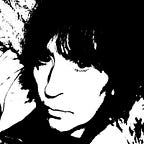(256): Snake Oil Science: All Alternative Medicine is Reducible to the Placebo Effect
Or, an author sets out to prove a point and shows his own bias in the telling
A couple of days ago, I plucked out a title from my vast stack of hoarded books. It just happened to be on top. (Or was there subconscious psychological bias at play when I put it on top?) It’s called Snake Oil Science by a biostatistician and senior research methodologist named R. Barker Bausell. It is a meticulously crafted debunking of almost every complementary alternative medicine (CAM) therapy out there.
He asks the question what is the placebo effect? It is something that we’re all familiar with: basically, an inactive medicine given to a person who believes it is a real pharmacologically active medicine is seen to have an active effect because the person believes that it is a real medicine. This effect has been shown over and over again. And then he suggests (using an elegant study) that the mechanism of action of this effect is through the production of endogenous opioids by the body, which accounts for the relief felt. That part was really interesting.
Then, he asks another question: are the effects felt by users of alternative therapies completely due to the placebo effect, or is there a secondary mechanism at work? As a statistician and designer of studies, he combs through many studies over the years and collates them, choosing only the very ‘best’ of the studies, which, in the case of the CAM studies, he says, is very hard to do, since the studies are badly designed.
I suppose he should know. The short answer (that I found at the back, much like a college chemistry text) is that the positive effects of every CAM modality is reducible to the placebo effect, and there was no other effect beyond it, and thus every single alternative therapy is simply a dressed up placebo.
The ironic part of the text is that he inserts himself, by way of editorial commentary and little jokes, throughout the book, which can be irritating or amusing, depending on your bent. Near the beginning, he lines out aspects of studies that show bias. In fact, one of the biggest sources of bias in research studies is the lack of negative studies, i.e., those studies which show no effect on the part of the medicine or therapies studied.
It is only natural for scientists to wish to present their best face in high-impact journals, after all. But this bias is present throughout the spectrum of research, both mainstream and alternative. All researchers want their research to succeed, to show an effect. Bausell notes this and then takes the CAM studies to task for being mainly positive (showing the efficacy of the alternative therapy). This, along with his other editorializing and belittling of alternative medicine, clearly shows his own bias.
I am not trying to say his conclusions are wrong, only that his tone could be construed as rather offensive to someone who feels that alternative therapies have helped them.
I note with interest that there are only two mentions of the opposite number to the placebo effect, the nocebo effect, the producing of a malign effect as a result of the belief in the damaging effects of a therapy or medicine. There is speculation that the nocebo effect is so strong that it can cause a person to die prematurely, as in a terminal cancer diagnosis or in a deliberately induced voodoo death, where the nocebo effect is culturally tied.
Certainly, the ridicule he dishes out toward people who believe in the efficacy of alternative medicine helps to create this hostile environment, where the fear of being made to look stupid can keep someone from trying a therapy that might bring comfort, if not healing. Or perhaps the fear that an alternative therapy might not work makes it ineffective. That is a classic nocebo effect. I am not saying that alternative therapies are as good as mainstream medicine for all maladies, but I do believe they have a place in the medical landscape and should not be tossed out wholesale.
The personal attention given to the patient and the atmosphere of relaxation and non-judgment can lower stress, which can lower inflammation. And this can promote healing. While the placebo effect is a real phenomenon and these CAM therapies work by this mechanism, that does not mean that they are useless beyond this single effect.
So, while Bausell’s thesis is properly proven in his work — that complementary and alternative medicine’s demonstrable effect appears to be wholly attributable to the placebo effect, I think he fails to take into account the nocebo effects that such a rigid presentation can have on those who might seek out treatments using expanded criteria beyond a singular medical effect induced by pharmacological action.
My own (non-scientific) view is that using alternative therapies as a means to buffer the psychological effects of the more direct (and less forgiving) mainstream therapies could create a more beneficial healing environment. To be fair, this book is 10 years old, so there is probably more up-to-date studies that could be added and considered for a work like this. And, of course, the very title is provocative, showing the author’s bias before the book can even be opened. Overall, it is informative but biased.
If you enjoy my posts, consider supporting my writing with a donation by clicking on the crazy button above (takes you to Paypal). I appreciate anything you can spare. I’ll occasionally post a thank you on Medium, so if you wish to remain anonymous, please indicate this. Thanks to all readers; I appreciate hearts and comments and all that cool Medium stuff!
